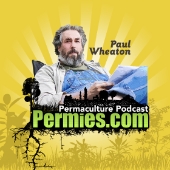Howdy Jason, welcome to Permies!
The situation you present is not the typical starting place of permaculture setups, your'e right: unfortunately there's way more degraded, eroded and desertified land out there for farming than full forests. That being said, there are still definitely Permaculture approaches to your situation!
Here is a great thread on transitioning an existing forest into a food forest.
Here is a great thread on what to grow in a forest understory.
To get more specific we would need more specifics- what species of trees are growing on your property? Is it relatively mixed, or a monoculture? Evergreen or deciduous?
Depending the tree species, finding
guilds could help identify the best plants to grow with your trees.
If you get a chance, I would also recommend David Jacke and Eric Toensmeier's two part Edible Forest Garden book(s). They're specifically written for temperate climate, and they address how to design into an existing forest.
Hope this was helpful!









